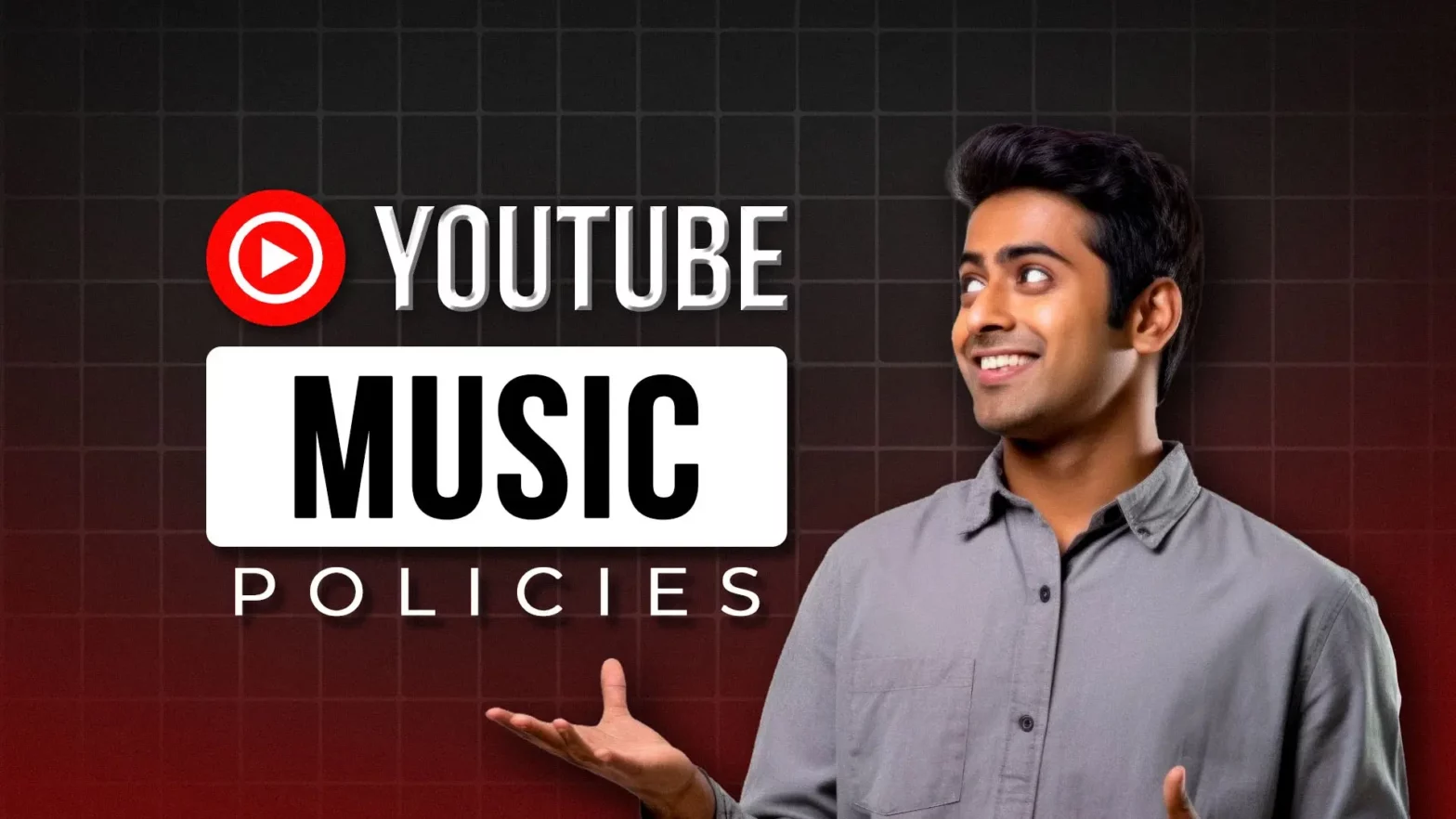Table of Contents
If you are a digitally aware person, we do not need to remind you that YouTube is one of the most visited sites on the internet, and its app is just as popular. The craze is not just about watching videos any more – it’s rather about the thousands of communities growing with growing engagement with the videos. So with this immensely increasing popularity, the demand for content has also exponentially increased, giving rise to a sudden surge in content creators as well.
Now music is without a doubt, one of the prime segments of content, found on YouTube and loved by people at the same time. But if you are one of those creators who depend on music for their content, you should also be aware of YouTube music policies and how they work.
Let us discuss in this blog, the use of royalty-free music, copyrighted music as well as music policies of YouTube.
What Is Music Copyright, And Why Is It Important For Youtube?
Understanding music copyright is important irrespective of the platform you are using. Be it for YouTube, your own vlog, or even podcasts, it is important to have a good idea about music copyright.
We know that it sometimes makes you feel that the copyright laws and YouTube music policies restrict your talent from fully achieving the shape that you want. However, we have to understand that copyright laws have been put in place to protect the original contents of creators and eventually you will also benefit from the same laws, considering other creators will not be able to use your creations without your permission.
Copyright can be essentially described as the legal right of the owner to his/her own intellectual property – which in this case might be a piece of music or a track. It will be this copyright that will dictate how and where the track might be used and by whom.
If you happen to use copyrighted music in your videos without the appropriate license or permission, copyrighted owners will have the right to not only sue YouTube, but also you for copyright infringement. The first thing that will happen is that you will have your video taken down. Considering the large number of these cases that spotted YouTube’s initial journey, they have now developed their own system and introduced a series of YouTube music policies to spot copyright infringement.
What is YouTube’s Policy on Music?
If you are one of the music content creators on YouTube, you will probably be already aware of the policies that YouTube has for you to be able to upload your content to the platform. These YouTube music policies are essentially meant to keep the platform law-abiding as well as safe. Here are some of the categories of music policies on YouTube.
Community Guidelines
YouTube keeps itself safe and free from dangerous content and different kinds of spam with the help of these guidelines and the YouTube Music Policies list. The community guidelines apply to everything starting from creators, and users as well as the contents that are uploaded.
Copyright
The YouTube music copyright policies are designed to spot any copyright infringements on a video that is uploaded, or infringements that may be there in the uploaded video itself.
Monetization
The name itself is quite self-explanatory and this policy basically is meant for those, who want to earn money from their YouTube Account.
Legal Removals
There are also policies in place constituting legal removal of content from YouTube.
You have to keep in mind all these music policies on YouTube, mainly while uploading your videos. In fact, the community guidelines are also designed to tacked malpractices like impersonation, fake engagement, child safety, nudity, etc. at the same time stipulating the kind of content that you can create and the elements that you can put in it.
So in essence, as per YouTube music policies, you can only use music that you have the right to use or are your own original creation. So it is always recommended that you make use of royalty-free music or seek permission from the original creator before using his/her music.
What is YouTube Content ID, and How Does it Work?
The Content ID System is another one of the efforts of YouTube to tackle copyright infringement as per the YouTube music copyright policies. Owners of music copyrights can make use of the Content ID to find out any instance of copyright infringement in relation to their content.
Content ID is essentially a scanner that scans all the videos that are uploaded on YouTube. It scans and compares the content with the already existing database of millions of content on YouTube already created and checked for infringement. If in case, there is indeed a match, the owner of the video is notified.
The video that matches the existing content in the database can be potentially blocked by the owner of the copyright. If the infringement is on a whole level and the user seems to have to right to the song, the entire video can be blocked from being viewed.
Another way to deal with videos matching with the database is monetization by the copyright owner. If they indeed choose to monetize it, they will be able to run ads in the video or get a share from the money that the YouTuber is making from said video.
What To Do If You Have a Copyright Infringement Notice?
A Copyright Infringement Notice is different from a Content ID in that it is more manual in its functioning. Content ID might be a completely automatic system, but it does miss out on some instances and may not be completely foolproof.
This can be brought to action when a person watching a video realizes that his content has been used in the video and the problem has not come up on the Content ID scan. The creator can then officially issue a Notice of Copyright Infringement.
So the uploader of the video will get this notice and YouTube will take the video down as per the YouTube Music Policies list. However, there are a number of other things that could happen after this. The options are not necessarily the same as what happens when some content is flagged by Content ID.
- The uploader is given one “strike” – and if there are a total of three “strikes” within a span of 90 days, YouTube may remove the channel completely. Not only will all the videos be lost, but any attempt to create any future accounts will also be stopped.
- Strikes are also known to hamper monetization and will stick to your account for a long time. This is something that no content creator really wants.
- In the other scenario, when the creator has already taken the required permission to use the music, they can oppose the claim and have the strike deleted.
The validity of a strike is 90 days and a creator has to raise his dispute within this period only.
Add non-copyrighted music to your YouTube video, Using Hoopr
If you are wondering where and how to find non-copyrighted, royalty-free music, Hoopr is the place to be. It is a growing community of over 2,00,000 creators, all contributing to the cause of creators facing a billion-dollar challenge of getting their hands on non-copyrighted music to suit their videos and serve their purpose.
These videos from Hoopr can rid you of your worries, legal risks, and copyright claims and help you concentrate on what you should – the content you create and the magic you aim to weave for the viewers.
So as a music content creator, now that you know the nitty-gritty of uploads on YouTube and the YouTube music policies to check, it is likely that you will be able to excel and expand the reach of your channel without any “strikes” and also ensure that your own content is safe and beyond the reach of Copyright Infringement. Be aware and be original – that is all you have to do to be among the forerunners of YouTube content creators.

